Introduction To Plum: What Is It?
Plum, scientifically known as Prunus domestica, is a fruit belonging to the Rosaceae family. It is believed to have originated from the Middle East and was later introduced to Europe by the Romans. Plum fruit is loved for its sweet and tart flavor and is commonly used in various culinary preparations, such as jams, jellies, juices, and desserts.
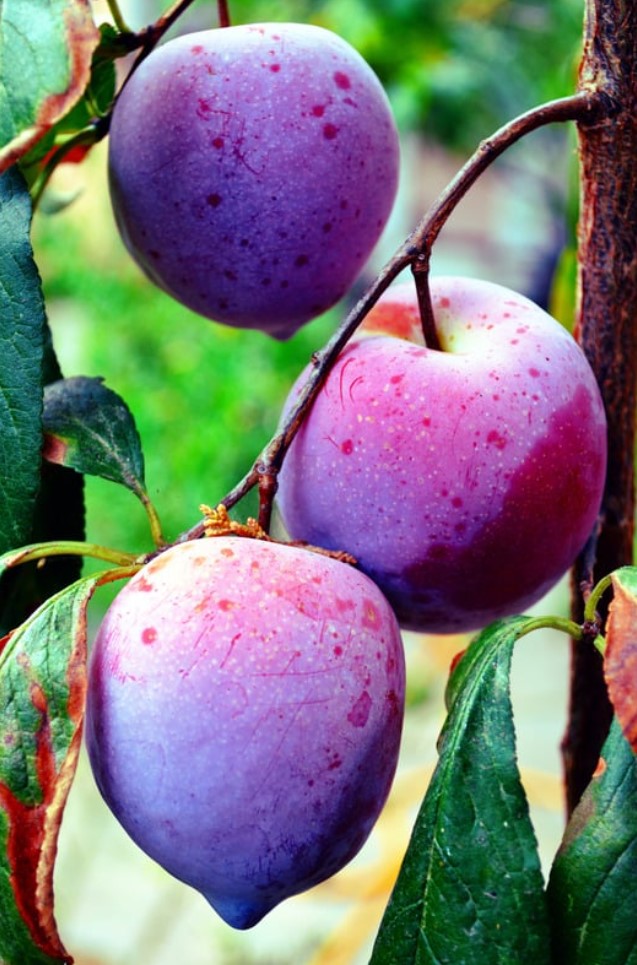
Plums are small to medium-sized fruits with smooth skin that ranges in color from deep purple to yellowish-green. The flesh of a plum can be yellow, green, or red and has a unique texture that is juicy and sweet. This fruit is not only delicious but also provides many nutritional benefits.
- Plums are an excellent source of dietary fiber, which aids in digestion and prevents constipation. In fact, just one plum contains around 1 gram of fiber.
- They are also rich in vitamins and minerals, including vitamin C, vitamin K, potassium, and copper. These nutrients help boost the immune system, improve bone health, and promote healthy skin and hair.
| Plum Nutritional Facts | Amount per 100g |
|---|---|
| Calories | 46 |
| Carbohydrates | 11 g |
| Fiber | 1.4 g |
| Protein | 0.7 g |
Plums come in different varieties, including sweet, tart, and Mirabelle plums. They also vary in size and color, but all are relatively easy to grow in temperate climates. California, Chile, and China are the top producers of plums worldwide, closely followed by Europe and the Mediterranean region.
In addition to its culinary uses and nutritional benefits, plums also have cultural and symbolic significance in various cultures. For instance, in China, plums are associated with longevity, while in Japan, the plum blossom represents perseverance and hope.
All in all, plums are a versatile fruit with great taste and plenty of health benefits. Now that you know more about what plums are, it’s time to explore the many ways you can enjoy this delicious fruit.
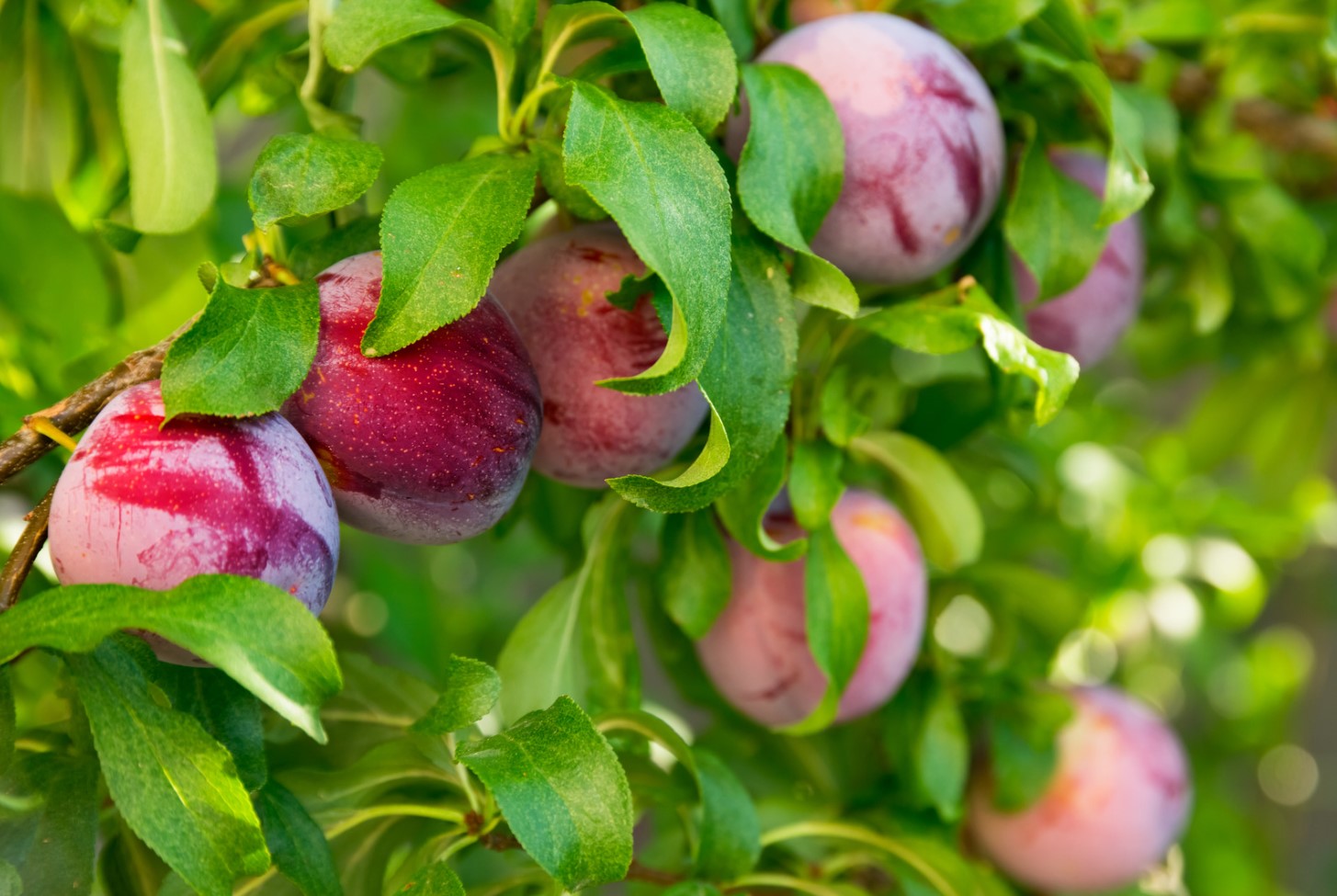
Plum Nutritional Value And Benefits
Plums are small, juicy fruits with a sweet and tart taste that can make your taste buds sing. They are a deliciously versatile fruit that can be eaten raw, cooked, or even made into a jam, syrup, or juice. However, beyond the pleasant taste, what are the benefits of plums? In this post, we’ll explore the nutritional value and benefits of this small fruit that packs a big punch.
Nutritional Value
- Plums are an excellent source of fiber, which helps to keep your digestive system healthy and regular.
- They are also high in vitamins A and C, both of which are antioxidants that help protect your cells against damage from free radicals.
- In addition, plums contain potassium, which is important for maintaining healthy blood pressure levels and keeping your heart functioning properly.
- Finally, plums are low in calories and fat, making them a healthy snack option that won’t break the calorie bank.
Health Benefits
Thanks to their impressive nutritional profile, plums offer a number of health benefits, including:
- Reduced risk of chronic diseases: The antioxidants found in plums can help to reduce your risk of developing chronic diseases like heart disease, diabetes, and cancer.
- Improved digestion: The fiber content of plums can help to keep your digestive system healthy and regular, reducing your risk of constipation and other digestive issues.
- Enhanced bone health: Plums contain important minerals like calcium and magnesium, which are essential for healthy bones.
- Lowered inflammation: The antioxidants in plums can help to reduce inflammation throughout the body, which can help to reduce your risk of developing chronic diseases.
Conclusion
In summary, plums are a delicious and nutritious fruit that offer a variety of health benefits. They are low in calories and fat while being high in fiber, vitamins, and minerals like potassium. Eating plums regularly can help to protect against chronic diseases, improve digestion, enhance bone health, and lower inflammation. So why not add plums to your grocery list the next time you’re shopping for healthy foods?
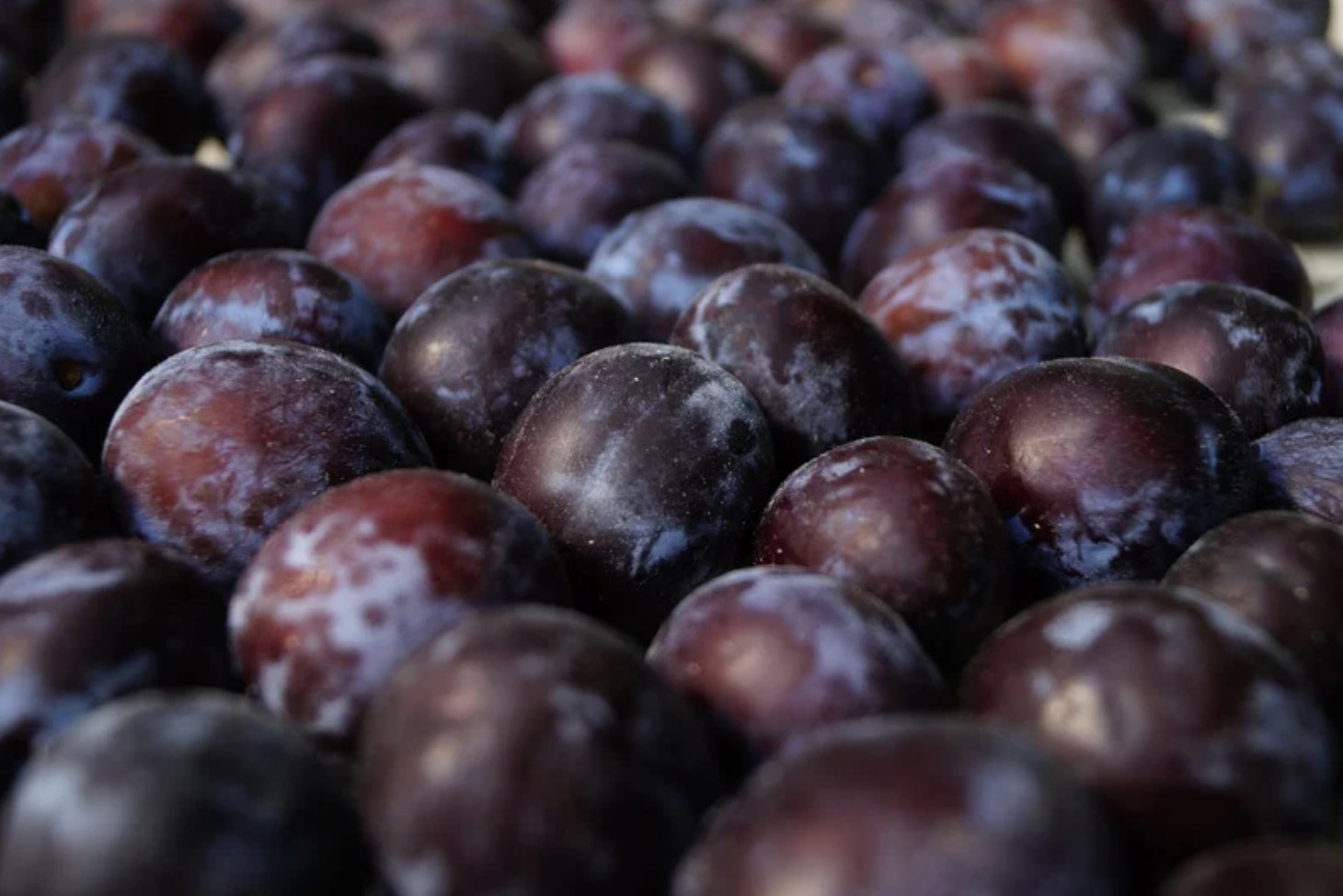
Plum Varieties: Sweet, Tart, Mirabelle & More
Plums are incredibly versatile and delicious fruits that come in a variety of flavors and colors. There are several different types of plums, including sweet, tart, mirabelle, and more. Each type of plum has its own unique taste and nutritional benefits. Here are some of the most popular plum varieties:
- Sweet Plums: Sweet plums are the most common type of plum and are known for their juicy, sweet flesh. They are often used in desserts and jams and come in a range of colors, including dark purple, red, and yellow.
- Tart Plums: Tart plums have a sour, acidic taste that is perfect for cooking and baking. They are often used in savory dishes, such as stews and sauces, and come in shades of green and red.
- Mirabelle Plums: Mirabelle plums are small, sweet plums that are popular in Europe. They have a yellow-orange color and a delicate flavor that is often used in jams and pastries.
- Japanese Plums: Japanese plums are larger than other types of plums and have a crisp, juicy flesh. They come in a variety of colors, including yellow, red, and purple, and are often eaten fresh or used in salads.
No matter what type of plum you prefer, they are all packed with vitamins and minerals that can improve your overall health. Plums are high in vitamin C, fiber, and antioxidants, which can help boost your immune system and prevent chronic diseases. So the next time you’re at the grocery store, be sure to pick up some plums and give them a try!
Plum Cultivation: Where Does It Grow?
Plums are a succulent fruit that come in many shapes, sizes and colours. Planting and caring for plum trees is simple, which is why plums are grown all over the world. You might not think about it, but the cultivation of plums has been going on for many centuries. The juicy fruit was believed to have originated in the Caucasus Mountains and was later introduced to Europe by the Romans. Nowadays, plums are grown in many countries worldwide including China, the United States, and Spain.
When considering the cultivation of plums, it is important to look at the climate and soil suitable for growing them. Plum trees thrive in a variety of climates, but they need a cold season to bear fruit. In general, plums love warm summers and cool winters. In areas where temperatures get too high, the trees may not set fruit, and in areas where the weather is too cold, the trees may not flower. They also like well-draining soil, so if it’s too wet or heavy, it may result in root rot.
- Plums are known to grow well in temperate zones all over the world, from Europe to Asia, Africa and North America.
- In the USA, California produces the most plums followed by Oregon and Washington respectively.
- In Europe, the plum fruit is extensively grown in France, Italy, Romania and Bulgaria.
- Asia is the biggest producer of plums with China leading the way, followed by Turkey, Japan and Iran.
| Country | Production |
|---|---|
| China | 7,535,472 tonnes |
| United States | 669,254 tonnes |
| Turkey | 476,741 tonnes |
| Iran | 380,399 tonnes |
Plums are delicious to eat, but their nutritional value is often overlooked. Aside from their juicy and sweet taste, plums are a great source of vitamins, potassium and fiber which promote good digestion, heart health and help prevent chronic diseases. Eating plums can help reduce the risk of developing Type 2 diabetes and even cancer.
If you’re planning to cultivate your own plum tree, ensure that you look into the weather and soil conditions suitable for the kind of plum you want to grow. With proper care and a suitable environment, growing plum trees can be an incredibly rewarding experience both nutritionally and aesthetically.
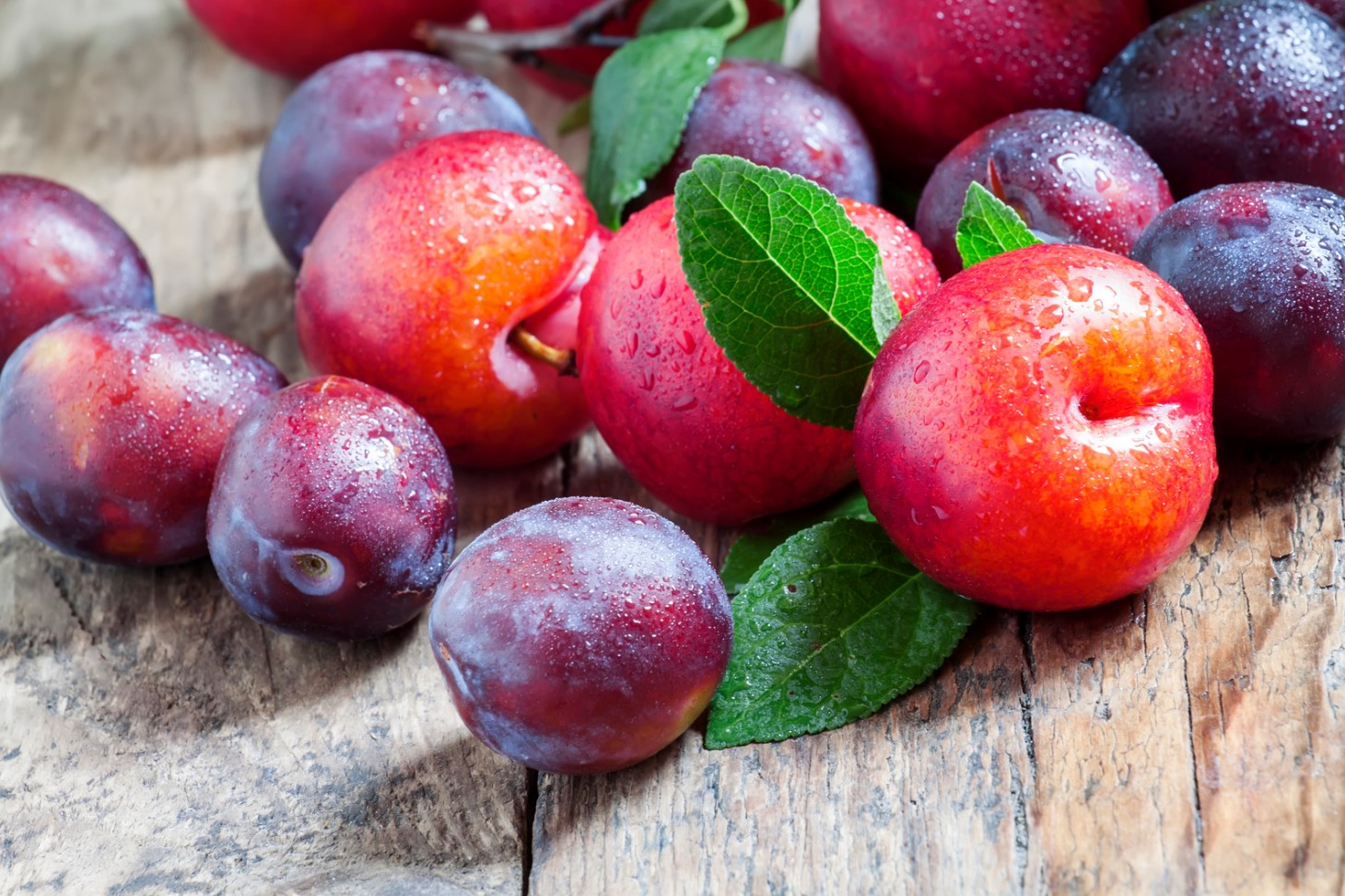
Plum History: Origins And Evolution
Plums are ancient fruits that have been cultivated for centuries. The history of plums dates back to the prehistoric era when they were first discovered growing wild in the Caucasus region of Eurasia. The word “plum” comes from the Latin word “prunum” which means “plum” or “prune.”
The cultivation of plums spread across the ancient world from Asia to Europe and beyond. Ancient Greek and Roman literature referred to plums as a symbol of fertility, and they were commonly used in medicines and cosmetics during that time.
- Plums were first introduced to North America by French settlers in the 17th century, and they quickly became popular in the New World as well.
- In the Middle Ages, plums were highly prized and were often given as gifts to royalty and nobility. The royal courts of Europe also known as ‘Plum Courts’ held plum festivals and competitions that prized the biggest and juiciest yields.
- Plums played a significant role in Chinese mythology, where they were believed to have the power to bestow immortality. The Chinese have been cultivating plums for over 2,000 years and have developed many different varieties of the fruit.
Over time, different varieties of plums emerged, including sweet and tart varieties. The Mirabelle plum, for example, is a small, sweet variety that originated in France. Today, plums are grown all around the world, including the United States, Italy, Spain, and China.
| Country | Production (in metric tons) |
|---|---|
| China | 7,700,000 |
| United States | 670,000 |
| Turkey | 620,000 |
| Italy | 520,000 |
Plums have come a long way since their wild origins in ancient Eurasia. Today, they are enjoyed all around the world for their delicious taste and numerous health benefits. Whether you prefer them fresh, dried, canned, or cooked, there is no denying the enduring popularity of this ancient fruit.
Plum Symbolism And Cultural Significance
Plum Symbolism And Cultural Significance
The humble plum may not be the most popular fruit out there, but it holds a special place in cultures around the world. From its role as a symbol of longevity and good fortune to its use in traditional medicine, the plum has a rich cultural significance that goes beyond just its taste and nutrition.
- China: In Chinese culture, the plum is one of the ‘Three Friends of Winter’ along with pine and bamboo. It represents resilience and endurance, as it is one of the first trees to blossom in the winter. It is also associated with good fortune and abundance.
- Japan: Plums (ume) have traditionally been used in Japan for medicinal purposes due to their antibacterial and anti-inflammatory properties. They are also used in traditional arts such as calligraphy and flower arrangement.
- Europe: In Europe, plums have been associated with royalty and nobility. The plum harvest was a symbol of prosperity and was celebrated with festivals and feasts. Plum pudding, a traditional British dessert, is still popular today.
- America: Plums have been a popular subject in American literature and art, often used as a symbol of growth and renewal. The famous poet William Carlos Williams wrote a poem titled ‘This Is Just To Say’ about eating the plums that were in the icebox.
Overall, the cultural significance of the plum spans the globe and has been a part of human history for thousands of years. Whether we are eating them for their nutritional value or incorporating them into our cultural traditions, the plum has a special place in our hearts and on our tables.
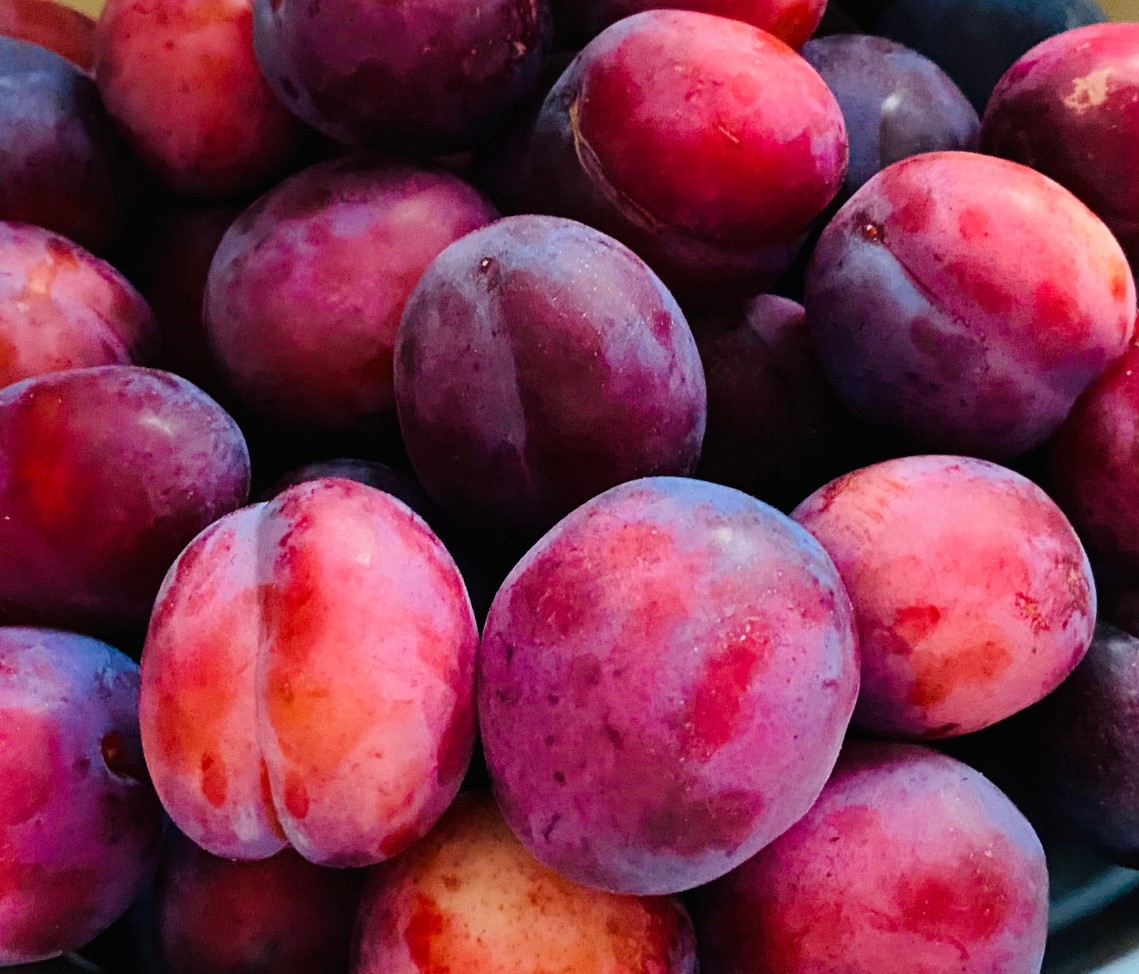
Plum Season: When To Harvest And Eat
Plums are juicy and nutritious fruits with a sweet and tangy flavor that make them a favorite amongst many people. However, you might not know that there is a specific season for plums to be harvested and eaten at their prime. Knowing when the best time is to eat plums can help you make the most of their delicious taste and health benefits.
The season for plums is typically during the summer months, from May through September, depending on the variety. During this time, plums are at their best and can be found at your local grocery stores, farmers markets, and even picked from your own backyard.
- Early Season Plums: These plums are typically available in May through June.
- Mid-Season Plums: These plums are usually available from June through August.
- Late Season Plums: These plums are typically available in August through September.
It’s important to note that the exact harvest season for plums can vary depending on your location and climate. Factors like temperature and weather can affect the growth and ripening process of plums. For this reason, it’s always best to check with your local farmer or grocery store to find out when plums are in season in your area.
| Plum Variety | Harvest Season |
|---|---|
| Black Splendor | July to August |
| Elephant Heart | August to September |
| Santa Rosa | June to July |
| Yellow Egg | August to September |
In addition to being able to enjoy fresh plums during their harvest season, you can also preserve them for later use. Plums can be frozen, canned, or made into jams and preserves. This allows you to enjoy the taste of plums year-round and make the most of their nutritional value.
In conclusion, knowing when to harvest and eat plums can help you enjoy their delicious taste and reap their nutrient-rich benefits. So, make sure to keep an eye out for these juicy fruits during their season and savor every bite!
Plum Uses İn Cooking And Baking
Plums are a versatile fruit that can be enjoyed in many different ways. One of the most popular ways to consume plums is through cooking and baking. With its sweet flavor and juicy flesh, plums can be used to create a variety of dishes, from desserts to main courses. Below are some plum uses in cooking and baking that you can try.
1. Plum Tart: A classic plum tart is a delicious dessert that is easy to make. Simply slice ripe plums and arrange them in a pastry crust. Add a sprinkle of sugar and cinnamon, and bake until the crust is golden brown.
2. Plum Jam: Making plum jam is a great way to use up a surplus of plums. All you need to do is boil the plums with some sugar and lemon juice until it thickens into a jam-like consistency. You can store it in jars and enjoy it all year round.
- Pro Tip: Add a splash of brandy to your plum jam for an extra kick of flavor.
3. Plum Salsa: If you’re looking for a savory use for plums, try making plum salsa. Combine diced plums with onions, jalapenos, and cilantro for a fresh and flavorful condiment that pairs well with grilled meats.
- Pro Tip: Experiment with adding different fruits and vegetables to your plum salsa for a unique twist.
- Pro Tip: Try serving your plum salsa with homemade tortilla chips for a crunchy snack.
4. Plum Crumble: A plum crumble is a delicious dessert that is perfect for cooler months. Simply bake sliced plums with a sprinkle of sugar and cinnamon, then top with a homemade crumble made from oats, flour, and butter.
| Plum Uses In Cooking And Baking | Benefits |
|---|---|
| Tart | Great for satisfying a sweet tooth without being too indulgent. |
| Jam | Preserves the flavor of the fruit and can be stored for long periods of time. |
| Salsa | A fresh and flavorful condiment that pairs well with grilled meats. |
| Crumble | A hearty and satisfying dessert perfect for cooler months. |
These are just a few examples of the many ways you can use plums in cooking and baking. Experiment with different recipes and see what works best for you. Whether you’re using plums in a sweet or savory dish, their unique flavor and juiciness are sure to add a delicious twist to any meal.
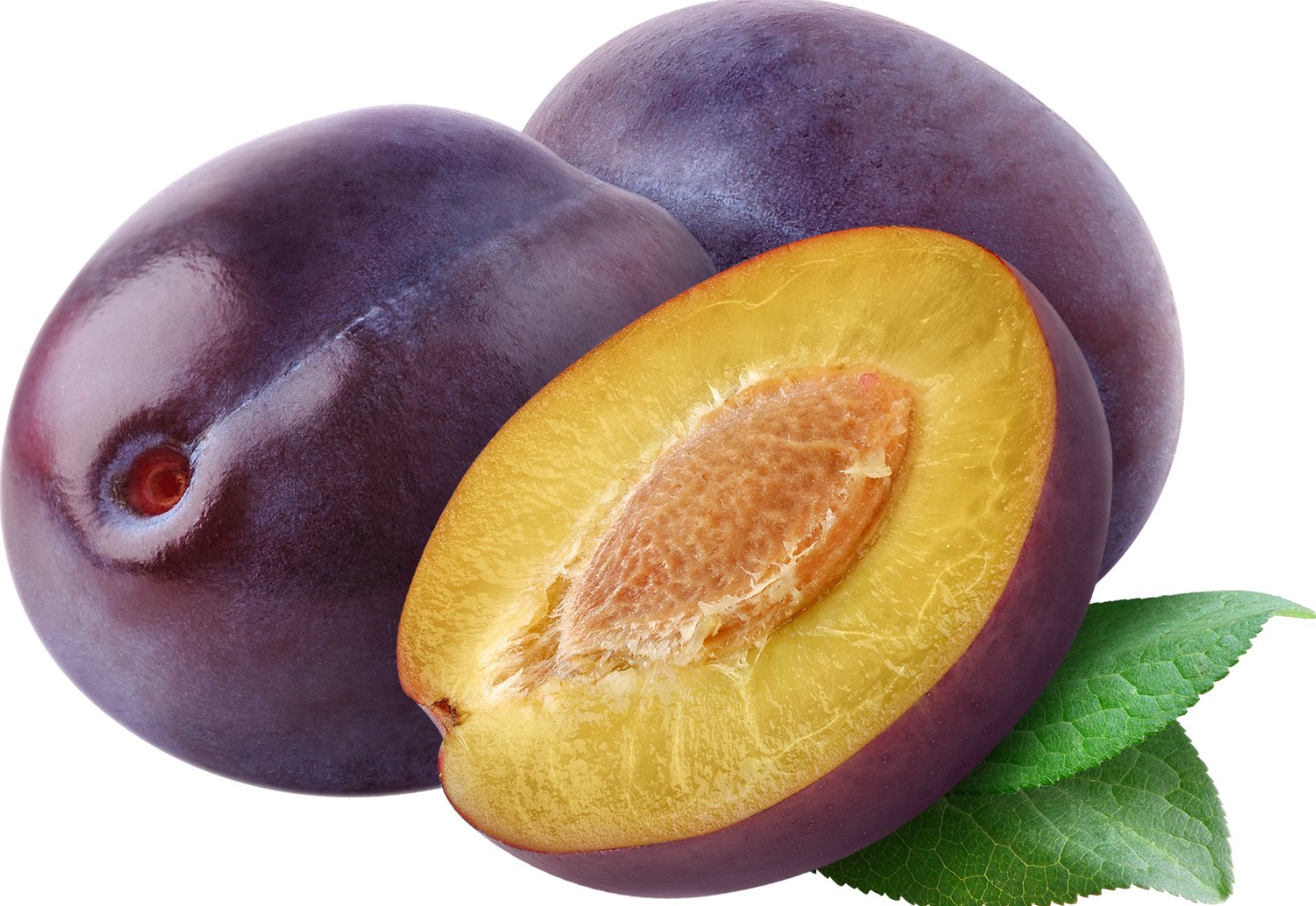
Plum Products: Syrup, Jam, Juice, And More
Plums are a delicious fruit that can be eaten fresh or used to create a variety of tasty products such as syrup, jam, juice, and more. Plum products are popular all around the world, and can be enjoyed as a part of a healthy and balanced diet.
One of the most popular plum products is syrup. Plum syrup is made by cooking plums with sugar and water, and can be used as a topping for pancakes, waffles, ice cream, and more. It can also be used as an ingredient in baking, and is a great way to add a sweet, fruity flavor to desserts.
- Plum jam is another popular product that is made from cooked plums and sugar. It is commonly spread on toast or used as a filling for cakes and pastries.
- Plum juice is a refreshing and healthy drink that can be made by blending fresh plums in a juicer or using a traditional press. It is rich in vitamins, minerals, and antioxidants, and can help to improve digestion and boost the immune system.
- Plum sauce is a popular condiment that is used in many Asian dishes. It is made by cooking plums with soy sauce, garlic, ginger, and other seasonings, and can be used as a dipping sauce or marinade for meats and vegetables.
In addition to these popular products, plums can also be used to make wine, brandy, and even vinegar. Plum vinegar is a popular ingredient in many Japanese dishes, and is often used in salad dressings and marinades.
| Product | Uses |
|---|---|
| Plum Syrup | Topping for pancakes, waffles, ice cream, and more; Ingredient in baking |
| Plum Jam | Spread on toast or used as a filling for cakes and pastries |
| Plum Juice | Refreshing drink rich in vitamins, minerals, and antioxidants; Improves digestion and boosts immune system |
| Plum Sauce | Common condiment used in many Asian dishes; Dipping sauce or marinade for meats and vegetables |
In conclusion, plums are a versatile fruit that can be used in a variety of ways to create delicious and healthy products. Whether you are making syrup, jam, juice, or sauce, there are countless ways to enjoy the sweet and tangy flavor of this delicious fruit.
Plum As A Natural Remedy: Health Benefits
Plums can be enjoyed not only for their delicious taste, but also for their numerous health benefits. From reducing inflammation to aiding digestion, plums have long been used as a natural remedy for various ailments. In this blog post, we will explore the health benefits of plums and how they can be incorporated into your diet to promote overall well-being.
Plums are rich in antioxidants such as vitamin C and beta-carotene, which can help protect your body from damage caused by free radicals. Free radicals are molecules that can cause oxidative stress, leading to chronic diseases like cancer, diabetes, and heart disease. By consuming plums regularly, you can help prevent these diseases and improve your immune system.
In addition to antioxidants, plums are also a good source of fiber. This fiber not only helps in digestion and keeping bowel movements regular, but also reduces the risk of heart disease and type 2 diabetes. The fiber in plums help keep the blood sugar levels in check and minimizes spiking which is beneficial for diabetic patients.
- Plums are known for their anti-inflammatory properties which can sooth conditions like osteoarthritis, and even asthma to some extent.
- Plums have shown to improve cognition and memory recall according to a study conducted in Korea in 2011.
Finally, plums are also beneficial for skin health. The vitamin C content in plums boost collagen production in the skin, resulting in a reduction in fine lines and wrinkles that often make skin look older. This makes plums great for those looking for an natural anti-aging remedy.
| Health Benefits of Plums | How to Incorporate it into your diet |
|---|---|
| Reduced inflammation | Snack on dried plums or add them to salads |
| Improved digestion | Blend fresh plums into a smoothie or make a plum jam or sauce |
| Reduced risk of chronic diseases | Use plums as a topping for yogurt or oatmeal |
| Improved skin health | Eat fresh plums as a mid-day snack |
Plums are truly a remarkable food with amazing health benefits. Next time you’re at the market, be sure to pick up some plums and enjoy its sweet taste whilst gaining all of its benefits!
Plum And Gut Health: Improving Digestion
Plums are a delicious fruit that many people enjoy eating for their sweet and tangy taste. However, aside from being a delightful addition to your diet, plums are also loaded with nutrients and vitamins that can help to improve your gut health. In this blog post, we will explore the benefits of plums for digestion and how they can enhance your overall health and well-being.
One of the primary reasons that plums are known to promote gut health is because they are high in fiber. This means that they can help to regulate your digestive system by adding bulk to your stool and promoting regular bowel movements. Also, the fiber in plums can help to feed the good bacteria in your gut and support healthy digestion.
Furthermore, plums are rich in antioxidants, which can help to reduce inflammation in the gut and protect against cellular damage. This is important because inflammation in the gut can lead to a range of digestive problems, such as irritable bowel syndrome (IBS).
- Plums are also a good source of prebiotics, which are compounds that nourish the beneficial bacteria in your gut. This can help to optimize the balance of bacteria in your gut microbiome and support healthy digestion.
- Additionally, plums contain sorbitol, a type of sugar alcohol that acts as a natural laxative. This can help to alleviate constipation and improve regularity in your bowel movements.
If you’re looking for a tasty way to improve your gut health, plums are a wonderful choice. You can enjoy this fruit on its own as a snack or add it to your favorite recipes for a burst of flavor and nutrition. Try incorporating plums into your diet and see the positive effects it can have on your digestion.
| Benefits of plums for gut health include: | How to incorporate plums into your diet: |
|---|---|
| High in fiber | As a snack |
| Rich in antioxidants | In smoothies or salads |
| Source of prebiotics | In desserts or baked goods |
| Contains sorbitol | As a topping for yogurt or oatmeal |
Plum And Skin Health: Anti-Aging Properties
The plum fruit not only tastes delicious, but it is also loaded with nutrients that provide various health benefits. One of the benefits that plums offer is improved skin health and anti-aging properties. This subheading of plum comes as a result of various studies that have shown how consuming plums can help to keep your skin looking youthful and healthy.
Plums are a rich source of antioxidants that help to protect the skin from damage caused by free radicals. These antioxidants help to keep the skin glowing by fighting off the oxidative damage that is known to contribute to the signs of aging such as wrinkles and fine lines. The antioxidants also help to reduce inflammation and prevent acne by keeping the oil glands unclogged.
- The skin-benefiting nutrients found in plums include:
- Vitamin C: helps to boost collagen production and protect the skin from UV damage
- Vitamin E: fights off free radicals that can cause premature aging
- Vitamin A: helps to promote skin cell turnover
- Phytochemicals: protect the skin from inflammation and DNA damage
Incorporating plums into your diet can be an easy and delicious way to reap the skin benefits. Plums can be eaten fresh as a snack or added to salads, smoothies, and desserts. You can also use them to make plum jam or syrup which can be used to sweeten your tea or pancakes. When consuming plums, make sure to wash them well before eating, and if you want to opt for organic plums to avoid pesticides.
| Plum Nutrients | Amount per 100g |
|---|---|
| Vitamin C | 9.5mg |
| Vitamin E | 0.26mg |
| Vitamin A | 17IU |
| Phytochemicals | Anthocyanins, Chlorogenic acid, Quercetin, etc. |
While there is no single food that can give you perfect skin, adding plums to your diet can help in keeping your skin healthy and young-looking. Remember to eat a balanced diet rich in a variety of fruits and vegetables to ensure your skin gets all the nutrients it needs for good health and longevity.
Plum And Eye Health: Boosting Vision
Plums are not only delicious but also incredibly nutritious, and offer several health benefits, including enhancing vision. Plums are a rich source of antioxidants, such as vitamin C and E, which can help protect your eyes from damage caused by free radicals. Additionally, the anthocyanins found in plums can improve blood flow to the retina, thus supporting healthy vision. Eating plums regularly can also reduce the risk of age-related macular degeneration, cataracts, and other eye problems.
Plums are available in various varieties, including sweet, tart, Mirabelle, and more. Sweet plums are great for snacking or adding to salads, while tart plums are perfect for making jams, jellies, and pies. Mirabelle plums, with their sweet and tangy flavor, are ideal for preserving or cooking.
- Plum Nutritional Value And Benefits:
- Vitamin C: 6% of daily value
- Vitamin K: 6% of daily value
- Fiber: 2 grams
- Low in calories
Plums are easy to grow and can be cultivated in various regions worldwide. They require well-drained soil and full sun exposure. In the United States, California is the top producer of plums, followed by Washington and Oregon.
Plums have a rich history, dating back to ancient times when they were cultivated in China. They were later introduced to Europe by Alexander the Great and were a favorite fruit of the Roman Empire. Plums also have cultural significance in many countries, symbolizing fertility, prosperity, and luck.
| Plum Season: | Best Time to Harvest: |
|---|---|
| Japanese Plums | late May to early July |
| European Plums | late July to early September |
| Red Plums | late May to late August |
Aside from eating fresh, plums can be used in various culinary preparations. They make great ingredients for pies, jams, chutneys, and sauces. Plum juice and syrup are also popular products. Plums can be used as a natural remedy for digestive issues, promoting gut health by regulating bowel movements and preventing constipation. Additionally, they can help reduce inflammation in the body, aiding in overall wellness.
Incorporating plums into your diet can be a delicious and healthy way to boost your eye health and overall wellness, while enjoying the unique flavors and benefits they offer. From snacking to cooking, there are endless ways to enjoy this versatile fruit.
Plum And Bone Health: Enhancing Calcium Absorption
Plums are not just a delicious fruit but can also greatly benefit your bone health by enhancing calcium absorption. Calcium is essential for strong bones, and plums can help your body absorb this mineral better. This can be especially beneficial for people at risk of osteoporosis. Plums are also a great source of other bone-healthy nutrients, such as vitamin K, magnesium, and potassium.
If you’re looking to improve your bone health, plums are a fruit you don’t want to miss. They contain high levels of polyphenols, which have been shown to improve bone density and prevent bone loss in animal studies. These compounds can also help reduce inflammation in the body, which is important for overall bone health.
- Plums are a good source of vitamin K, which is essential for bone health. This vitamin helps your body absorb calcium, and studies have shown that people who consume more vitamin K have higher bone density.
- Magnesium is another important mineral found in plums. This nutrient helps your body form new bone tissue and is essential for maintaining strong bones.
- Potassium is also present in plums, and this mineral helps maintain the pH balance in your body. When your body is too acidic, it can lead to bone loss, so keeping your pH balanced is important for bone health.
Overall, adding plums to your diet is a great way to enhance your bone health. Whether you eat them fresh, dried, or in a recipe, plums are a versatile and delicious way to get the bone-healthy nutrients you need. So next time you’re at the grocery store, be sure to grab a bag of plums and start reaping the benefits!
Plum Recipes: Salads, Desserts, And Smoothies
Plum lovers, rejoice! If you are looking for some exciting and delicious ways to incorporate plums into your diet, then this post is for you. Plums are not only tasty, but they also offer several health benefits, making them a must-add to your meals. In this post, we will explore some fantastic plum recipes that are perfect for salads, desserts, and smoothies.
When it comes to salads, plums are an excellent addition as they add a burst of flavor and texture to any salad. A salad that incorporates plums is not only flavorful but also visually appealing, making it a perfect meal for dinner parties or special occasions. A classic plum salad recipe includes arugula, goat cheese, and toasted almonds, all topped with sliced plums and a honey vinaigrette.
- Arugula
- Goat cheese
- Toasted almonds
- Sliced plums
- Honey vinaigrette
Now, let’s talk about desserts, shall we? Plums are excellent in desserts as they bring a natural sweetness and tartness that elevates any dish. One simple yet delicious plum dessert recipe is grilled plums with cinnamon sugar and vanilla ice cream. To make this recipe, cut the plums in half, remove the pits, and grill them for 3-4 minutes on each side. Sprinkle them with cinnamon sugar and serve them with a scoop of vanilla ice cream. Talk about heaven!
- Cut plums in half
- Remove pits
- Grill for 3-4 minutes on each side
- Sprinkle with cinnamon sugar
- Serve with vanilla ice cream
Finally, let’s talk smoothies. Plums are perfect in smoothies as they add a natural sweetness while also providing several health benefits. A fantastic plum smoothie recipe includes spinach, frozen bananas, almond milk, and plums. Blend all of the ingredients together until smooth, and voila! You have a delicious and healthy smoothie that can jump start your day.
| Ingredients | Instructions |
|---|---|
| 2 cups of spinach | Blend all ingredients until smooth |
| 2 frozen bananas | |
| 1 cup of almond milk | |
| 2-3 plums |
In conclusion, plums are a versatile ingredient that can be used in various recipes. From salads to desserts and smoothies, plums make an excellent addition to any meal. Not only are they delicious, but they also offer several health benefits making them a must-have in your diet. We hope you enjoyed these plum recipes and give some of them a try. Your taste buds and body will thank you!